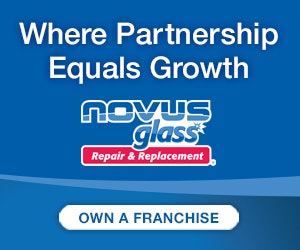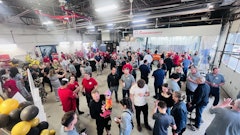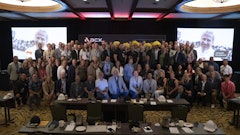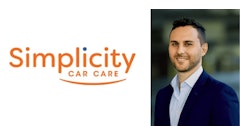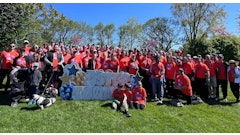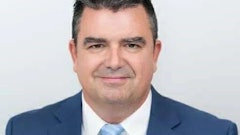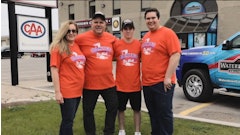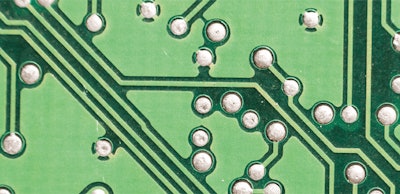
Where we’ve been and where we’re going, from the perspective of shop operators
Column by WADE BARTOK, CONNOR JAMESON
Vehicles have been arriving at collision centres since the dawn of car crashes. Damage is rarely the same; it takes a wide range of skills to achieve a successful repair. This has created a highly resourceful industry. Back-and-forth on the “proper repair process” and varied skill levels across the industry has created a distrust between our industry and the motoring public. Customers shop around and fail to understand why there may be a price variation from shop to shop. Inconsistent estimates and different processes resulted in quality issues; and they were prevalent. Some shops or technicians may want to replace a panel and some may want to replace it. The result? The shops with the higher prices were considered poor operators.
Our industry knows how to adapt to widespread changes at an increasing pace. A major change in vehicle construction occurred with the introduction of unibody construction and, right after, came pollster putty and base clear paint. Soon, the change became frantic with direct repair programs, plastic components, waterborne paint, fuel economy concerns, ADAS, liability concerns over proper repair process, OEM procedures, massive unfunded equipment and re-training commitment, and now electric vehicles (EV).
During this time, our industry was stuck in the middle of a triangle relationship trying to please the insurers who want to pay as little as possible and the customer who wants their second largest investment to be repaired to pre-accident condition. The motivation for each party was often at odds, and often little regard was shown to what was required to safely repair the vehicle.
In roughly 2010, a new partner entered the triangle. Original Equipment Manufactures (OEMs) realized not all collision repairs are being performed safely. Re-leasing or re-selling these vehicles became liability concerns for these large corporations. To mitigate these liability challenges, OEMs have spent significant time and energy producing engineered repair processes for the collision industry to follow. If these steps are followed correctly, it eliminates a lot of the variation in the estimating process—now called repair planning—we used to see. For example, no technician should splice a used A pillar section if the OEM procedure does not allow for it. There is now only one way to repair a vehicle—the OEM recommended way. The $42.5 million claim against John Eagle Collision sent shock waves across the collision industry and many, but not all the players involved, took note: everything has changed, and the change is scary. If you didn’t know it before, you now knew that the lens of public safety must take be involved with every repair. Despite all the changes in repair process and the massive capital investment in training and equipment, the collision industry is typically compensated one half—50 percent—of the rates billed by the mechanical industry. No explanation has been given as to how or why this discrepancy is allowed to be executed on the collision industry.
Operating, capital and human resource costs have far exceeded the increase compensation rate resulting in reduced capacity in the collision industry. This is of particular concern in rural areas where the volume of repairs makes the necessary investment to remain in the industry an economic decision the business owner must face alone. In urban centres, the increasing value of real estate is pushing many shops out of business. Consumers are facing long wait times to have their vehicles repaired today and the financial pressures on the collision industry will only make these wait times longer. From outside the industry, collision repair is a mature industry. The number of shops across the country is decreasing; consolidators are buying up the remaining shops to capitalize off scale, and there is no evidence of a need for an increase of service providers in the future, due to mass uptake of ADAS technology from manufacturers which in turn, is decreasing the volume of claims.
When advanced driver safety systems were being installed as a feature in mass produced vehicles in 2012, the collision industry seemed to be entering the “sunset industry” phase. On the contrary, the collision industry is in demand more than ever. The increase in vehicle technology and the complexity of today’s vehicles have increased the hours required, the parts required, and technical skill set required to repair modern vehicles.
For those inside the industry, we would feel more comfortable describing ourselves as a tech start up. We’ve seen the stats, and it’s old news: vehicles today contain between 70-100 different electronic control units. A Boeing 787 Dreamliner has 14 million lines of code running through it, a modern car has over 100 million. These are highly specialized vehicles with overlapping systems requiring constant retooling and retraining to repair safely—and if you’re lucky, maybe even efficiently. This is not a complaint about the increased sophistication and required inputs to do our jobs, simply raising awareness that the speed ramp of changes in our industry has been exponential in the blink of an eye. Changing perspective now—from looking at new tech being crammed into a new car, to the car itself as a piece of tech with new iterations coming out every year—let’s consider the following.
Construction, connectedness, features/ abilities, energy systems (BEV, PHEV, HEV) hydrogen, etc. the next industries where automation is readily available, cheaper, and more efficient (port workers – longshoremen) are going on strike and putting in agreements to BLOCK automation while also negotiating raises.
They are getting paid more to do less, automation in collision is a long way off due to the complexity and unpredictability of it, and we are getting paid less (accounting for inflation) to do more.
Vehicles, along with the technology in them, are changing daily. New models and brands are on the road before technical schools can develop training courses to repair them, and it is taking a grassroots effort from the shops and industry associations to put the tools and programs in place to ensure that vehicles are repaired properly, and our technicians are kept safe while doing so.
The number of software programs in place to support our operations is growing at much the same rate. Some are a cost of doing business and some are a cost incurred to provide a better product to the end consumer, but they all come with a monthly fee that erodes the bottom line.
• Connected cars
• Tech companies developing vehicles (Apple, Google)
• ADAS
• Fees to access OEM repair procedure data to repair the vehicle correctly
• Fees for scan tools
• Online booking management systems fees
• Fees for data storage (higher quality photos take more space)
Recently, some parts of the industry began to receive compensation for repair planning, and this includes documenting damage, researching the most recent repair operations, the required parts (reusable, non-reusable, etc.), coordinating the repair plan with the technician to ensure repair procedures are understood (digesting anywhere between 10-100 pages of procedures) and finally exporting a work order. Feels a little labour intensive for $50, if you ask me.



